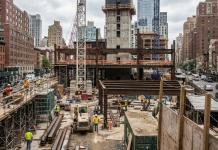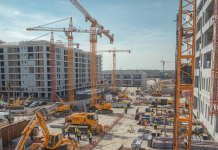Forty percent of builders constructed smaller homes in 2023.
Another 26% planned lower-square-footage builds for 2024, according to the National Association of Home Builders.
The reason isn’t aesthetics. It’s economics.
The tiny homes market is projected to reach $22.91 billion in 2025 and $33.18 billion by 2035. Over 30,000 prefabricated and modular tiny homes sold in North America over two years, accounting for 60% of total tiny home sales.
Why Smaller Makes Sense
Modular construction currently represents less than 6% of projects in the U.S. and Canada, but ambitious developments are underway across the West Coast, Philadelphia, and Minneapolis.
The shift isn’t just about square footage. It’s about construction efficiency.
Smaller builds mean faster timelines, lower labor costs, and less material waste. A 15-square-meter tiny house with Nordic-inspired interiors and hidden bedrooms can be prefabricated and assembled in weeks, not months. The same principles scale to larger modular projects.
Architecture students at Northeastern University had entirely U.S.-based modular case studies for the first time in fall 2024. Domestic capacity is growing.
The New Construction Economics
New construction homes carry approximately 45% lower insurance premiums than older homes. Modern safety features and materials reduce risk, which reduces cost. Energy certifications for HVAC, insulation, windows, and appliances mean significantly lower utility costs for owners.
In Texas, a 1,600 to 1,700-square-foot new build averages $325,000 compared to $300,000 for similar-sized resale homes. But add repairs and maintenance for homes 20 or 30 years old, and new construction costs less.
The Materials Advantage
Sustainable materials like bamboo, reclaimed wood, and recycled metal are becoming standard in 2025 construction.
Why? They’re cheaper and faster to work with in compact builds.
Energy-efficient insulation and solar panels reduce environmental impact while cutting operational costs. Smart systems controlling temperature, lighting, and security moved from luxury to standard. Even tiny houses now feature automated temperature-controlled floors and voice-activated systems.
Construction technology filtered down from high-end projects to compact builds where every square foot counts.
What This Means for Construction Professionals
Smaller builds with smarter systems deliver better economics for builders and better performance for owners. Insurance costs drop 45%. Utility costs drop significantly. Maintenance costs stay low for decades.
The 40% of builders who went smaller weren’t following a trend.
They were following the math.








